 |
| The Louise Log: A Web Comedy Series |
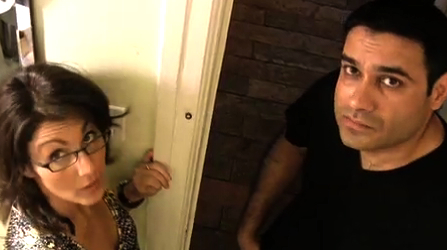 |
| Louise and Raj in episode 13 |

The radical notion that women like good movies
 |
| The Louise Log: A Web Comedy Series |
 |
| Louise and Raj in episode 13 |

I have never considered Liz Lemon a feminist icon of any kind, nor have I ever considered 30 Rock especially strong when it comes to gender politics.I don’t care for the obsessive joke-making about how Liz is ugly/mannish/old/awkward, and I haven’t always been comfortable with the way some of the “she’s baby-crazy!” or “she’s relationship-crazy!” comedy has played. …And yet, I think it’s been one of the most important, helpful, meaningful, landscape-altering shows for women in the history of television.
Old-timey Hollywood banter, imaginary conversations with Angelina Jolie, photo-bombing Harrison Ford? How could this not be amazeballs??
“It’s a very sloppy, loud party and that seems like our kind of thing.”
 |
| Kirsten Dunst, Isla Fisher, and Lizzy Caplan in Bachelorette |
 |
| Rebel Wilson as the bride, a well-adjusted foil for the main characters |
 |
| Bachelorette has a happy ending without absolving the characters |
 |
| Big Girls Don’t Cry: The Election that Changed Everything for American Women |
If Katie Couric was the nail in Sarah Palin’s vice-presidential coffin, the hammer was Tina Fey. Fey’s deadly impression of Palin was played out over half a dozen sketches for which Fey returned to Saturday Night Live, where she had been the first female head writer and where, in February, she made news with her comedic defense of Hillary Clinton, “Bitch is the new black.”
[…]Fey’s take on Palin was serendipitous, prompted by the strong resemblance between the two women. But that likeness was part of what made it groundbreaking: a vice-presidential candidate looked like a famous comedian. A female comedian. And on it went. Hillary Clinton had been played by Poehler for several years. The interview that brought Palin low had been administered by Couric, a woman also played by Poehler. The vice-presidential debate had been moderated by Gwen Ifill, prompting a guest appearance by the inimitable Queen Latifah. Inasmuch as each of the impersonations relied on the amplification of feminine traits–Poehler/Couric’s heavily mascara’d and incessant blinking, Poehler/Hillary’s hyenic laugh, Fey/Palin’s sexy librarianism–in ways that might indeed be sexist or reductive, those characteristics were ripe for amplification only because the objects of political and media parody had high-pitched laughs and wore mascara and pencil skirts. The heightened femininity of Palin’s political persona also came in for examination; during the Couric-Palin sketch, Couric pointed out to a stumped Palin, “It seems to me that when cornered you become increasingly adorable.” That little one-liner, accompanied by Fey’s inspired shooting of fake finger guns, distilled a gender dynamic–wherein women infantilize themselves as a defensive strategy–it might otherwise take thousands of words to unspool.
[…]
But in comedy, as in real life, the arrival of Palin on the scene threw Clinton into a new focus. Next to Palin, Clinton’s good qualities–her brains, competence, work ethic, her belief in secular government and reproductive freedoms, her ability to complete sentences–became far more evident than they had been before there was another potential “first woman” to compare her to. Nothing conveyed these haze-clearing realignments of perspective as quickly and as firmly as Fey and Poehler did in five and a half minutes. The parodic depiction of the two women side by side exposed the complex dynamics of Palin’s parasitism, their unwilling symbiosis, and their stark differences.
You can read reviews of the book at Gender Focus and Feministing.
 |
| Movie poster for Vamps |
Jason Buchanan on Rotten Tomatoes effectively captures the plot as follows: “Radiant New York City vampires Goody (Alicia Silverstone) and Stacy (Krysten Ritter) find their immortality in question after learning that love can still smolder in the realm of the undead. Meanwhile, Russian bloodsucker Vadim (Justin Kirk) prowls the streets in search of the next big thrill, and Dr. Van Helsing (Wallace Shawn) seeks to exterminate the creatures of the night as young Joey Van Helsing develops an unusual fixation on Stacy. As ravenous ‘stem’ vampire Ciccerus (Sigourney Weaver) presides over her dark dynasty with the help of her loyal assistant Ivan (Todd Barry), oddball Renfield (Zak Orth) strives to impress Stacy and Goody by any means necessary. Amidst all of the bloodshed and intrigue, nefarious vampire Vlad (Malcolm McDowell) works to perfect his knitting skills.”
 |
| Alicia Silverstone as Goody and Krysten Ritter as Stacy in Vamps |
[SPOILER] Case in point: one of my absolute favorite scenes in the film happens early on, when Goody and Stacy head out for their nighttime ritual of club-hopping and imitating the new dance moves of the local youth “Day Walkers” (the term they use to refer to The Living among them). A couple of particularly horrible dude vampires approaches a woman after she bends over, ass in the air, with the word “Juicy” written on her tight pants. The dude vamps merely introduce themselves to her, to which she responds, “I’ll get my coat.” Goody chastises the horrible dude vampires—Goody and Stacy drink only the blood of rodents, not humans—and the dudes respond with, “She’s asking for it,” referring to her “Juicy” attire. It’s a pretty fucking great commentary on the victim-blaming that always accompanies any instance of the rape or sexual assault of women.
 |
| Stacy and Goody on the computer |
This scene makes me so happy for a couple of reasons. First, a woman intervening to help another woman avoid getting killed by two horrible dude vampires—an obvious metaphor for rape in this scene, rarely happens in movies. How lovely to see that! Because women looking out for their friends certainly happens in real life—first-hand experience! Second, while I don’t necessarily like the implication that women always go for Bad Boys, I appreciate the acknowledgment that bros like this, who want to harm, abuse, and assault women, definitely exist.
 |
| Stacy, Goody, and Sigourney Weaver as Cisserus in Vamps |
Two words: Sigourney Weaver. Do we not adore her? The Alien films, mainly due to Weaver’s badass role as Ellen Ripley, remain one of the quintessential go-to franchises for getting that much-needed feminist fix that Hollywood movies today seem less willing to provide. (Quick shout out to Hunger Games, though!) And Weaver’s role in Vamps as Cisserus, the head vampire, or “Stem,” as they refer to the few vampires who possess the power to turn people into vampires, displays some feminist qualities—strength, leadership, and ambition, to name a few—but her character isn’t without flaws.
While the other vamps fear Weaver’s character—because she’s In Charge—they mainly fear her because she’s the evil, murderous villain. She obsesses over acquiring the love of young men, and when she doesn’t get it, well, you know, she eats them. In many ways, she reminds me of a vampiric version of Miranda Priestly, Meryl Streep’s character in The Devil Wears Prada. She often summons Goody and Stacy (by psychically speaking to them), and it’s almost always to make them model clothing. (Ha!) See, vampires can’t see themselves in mirrors (invisible!), so Weaver wants to look at these women wearing her very youthful, fashionable clothing so that she can visualize what it possibly looks like on her. Eventually though, Cisserus’ power goes so far to her head that she begins putting the other vampires in danger, and the tagline for the last act of the film basically becomes “This Bitch Needs to Die.”
 |
| Vampires hanging out at the club |
Collider: What made you decide to jump into the vampire genre with Vamps?
Weaver: Well, I’m a big Amy Heckerling fan, and I also loved the character. She was so unrepentant … I love playing delicious, evil parts like that.
Collider: How does your character fit into the story?
Weaver: She is the person who turned the girls into vampires. So, they have to do her bidding, and she’s very unreasonable and demanding. I would have to say that the one change I made was that I thought she was not really enjoying herself very much, in the original script. I thought, “What’s not to enjoy?” She’s 2,000 years old, she can have anything, she can have anyone, she can do what she wants, so I wanted her to be totally in-the-moment. So, I talked to Amy about it and she just evolved that way. She’s a really happy vampire. She digs it.
 |
| Stacy and Goody at the club |
That’s why this close relationship between Goody and Stacy is so important to see on The Big Screen in 2012.
In an interview conducted with the director Amy Heckerling by Women and Hollywood, Melissa Silverstein asks the question, “Do you have any comment on the fact that only 5% of movies are directed by women?” Heckerling’s response? “It’s a disgusting industry. I don’t know what else to say. Especially now. I can’t stomach most of the movies about women. I just saw a movie last night—I don’t want to say the name—but again with the fucking wedding, and the only time women say anything is about men.”
Word.
 |
| The cast of The Addams Family |
Girl Scout: Is this made from real lemons?
Wednesday: Yes.
Girl Scout: I only like all-natural foods and beverages, organically grown, with no preservatives. Are you sure they’re real lemons?
Pugsley: Yes.
Girl Scout: Well, I’ll tell you what. I’ll buy a cup if you buy a box of my delicious Girl Scout cookies. Do we have a deal?
Wednesday: Are they made from real Girl Scouts?
Myrna Waldron is a feminist writer/blogger with a particular emphasis on all things nerdy. She lives in Toronto and has studied English and Film at York University. Myrna has a particular interest in the animation medium, having written extensively on American, Canadian and Japanese animation. She also has a passion for Sci-Fi & Fantasy literature, pop culture literature such as cartoons/comics, and the gaming subculture. She maintains a personal collection of blog posts, rants, essays and musings at The Soapboxing Geek, and tweets with reckless pottymouthed abandon at @SoapboxingGeek.
In case you’re unfamiliar with this 90’s show (despite it’s old age, it deserves to be revisited) the series follows the misadventures of four aliens sent to Earth as a human family. Their mission? Learn and discover the ways of humanity and report it all back to the Big Giant Head, the leader of their home world (played by William Shatner). The show was rife with social criticism, as these “aliens” were able to point out hypocrisies that only an outsider could see.
First, Sally: tall, blond, and a soldier. Sally (Kristin Johnston) comes in with contradictions, my favorite kind of character. She’s the security officer and is the toughest, strongest and most militarily inclined of them all. However, her deep and abiding love for shoes is a running joke of the show, although, in spite of her long legs and blond hair (which would make a Barbie weep), her clothing is mainly old pants, army boots and a t-shirt.
Her character serves as the perfect point at which to make some valid criticisms of women in America. For example, her automatic assumption of all housewifely duties, her hatred of them and inability to fulfill them satisfactorily, is one of her constant frustrations. In fact, Tommy (Joseph Gordon Levitt) is the better cook (and florist) and the family is ashamed when they discover this fact. That gender roles must be kept intact is what these aliens have surmised from society and they feel it a rule that must be adhered to absolutely.
In fact, in the very first episode, Sally whines to the leader of their little family, “why do I have to be the female?” To which Lithgow, or Dick, replies, “We drew straws and you lost” the implication of course being, that everywhere in the universe, the females get the fuzzy end of the lollipop.
Sally’s adventures into the mysterious world of women showcases the varied and constant stereotypical ideas about womanhood. For example, Sally’s virginity is a great cause of confusion for her and she’s unsure of the way that she’s supposed to feel about it (she laments once that she is both ashamed and proud of it, but doesn’t understand why). In the episode given above, entitled “Big Angry Virgin,” Sally, in her experimental relationship, feels pressured to change to please the man she’s dating; this man asks her to allow him to be more in control, and when she completely concedes to his every opinion, he get’s frustrated, still feeling thwarted in his desires. Obviously, the moral in the end is that Sally must realize that she’s fine the way that she is, nor does she need to use pressured sex to repair their relationship (stick around after the credits of the episode to listen to her final thoughts on the matter).
Second Mary Albright: brilliant, saucy, sarcastic, sexy. I love this character, the older academic with her famous drunkenness and pettiness. Mary (Jane Curtin) portrays humanity’s goodness and our weaknesses and I loved that a woman plays this role. She’s there to educate the Solomon’s on everything that humans are, showing them the good and the bad and doing it all with no sense of long-suffering. She bitches about everything and makes her feelings known—no Angel on the Hearth here.
In the episode above, she’s shown in the first few weeks of her relationship with Dick (Lithgow) in uncharacteristic silliness, a trait that fades as their relationship progresses (stick around for characteristic Mary goodness in the clips below).
Third, Mrs. Dubcheck: a surprisingly virile and frisky older lady of dubious ethics; she’s the Solomon’s landlady and often regales them with tales of her glorious youth and exploits.
Fourth, Vicky Dubcheck: her younger, perky, white trash daughter (complete with colored bra and cleavage).
There are various other women in the show, including Tommy’s (Gordon Leavitt) girlfriends (one a hippy feminist, the other a prom queen), substantially different girls, although both are filled with angsty puppy-love.
While the show certainly isn’t a perfect example of feminism in Hollywood, the show does have an incredibly ability to understand and expose so many of the imperfections in our gender roles and relations in modern America.
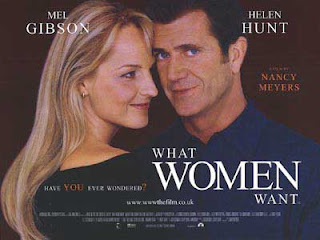 |
| Not this. |
While one can easily find wider representation in art house movie theaters, commercial, blockbuster films for the masses have long been entrenched in a sexist Hollywood boys’ club. While these commercial films had flaws, the audience support and huge profits should teach Hollywood a lesson about what women want.
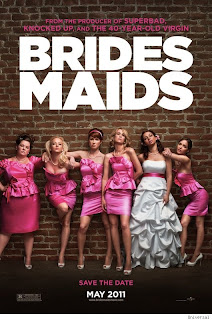 |
| Bridesmaids featured a female protagonist and told a uniquely female story, while still attracting and entertaining male audiences. |
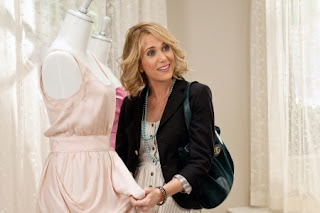 |
| Kristen Wiig co-wrote the film. |
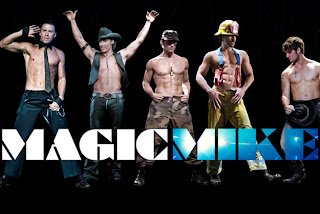 |
| Magic Mike proved the female gaze is alive and well. |
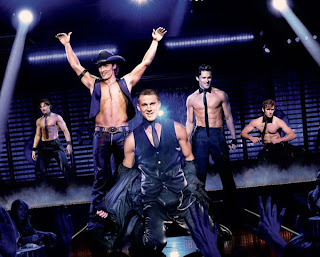 |
| Many audience members were disappointed that there wasn’t more stripping. |
 |
| RiffTrax: funny white men. |
 |
| MST3K / Cinematic Titanic: mostly funny white men. |
 |
| OH MY GOD GIVE HER A SHOW ALREADY |
 |
| From “Into The Wild Green Yonder,” Amy & Leela talking. |
 |
| From “Zapp Dingbat,” Munda, Leela, Fry and Bender. |
 |
| Leela and Amy wrestling in leotards. Objectification of women? Surely you jest. |
Myrna Waldron is a feminist writer/blogger with a particular emphasis on all things nerdy. She lives in Toronto and has studied English and Film at York University. Myrna has a particular interest in the animation medium, having written extensively on American, Canadian and Japanese animation. She also has a passion for Sci-Fi & Fantasy literature, pop culture literature such as cartoons/comics, and the gaming subculture. She maintains a personal collection of blog posts, rants, essays and musings at The Soapboxing Geek, and tweets with reckless pottymouthed abandon at @SoapboxingGeek.